Numerical Investigation of Spray Collapse in GDI with OpenFOAM
Abstract
1. Introduction
2. CFD Modeling
Phase Change Modeling
3. Single Hole Injector
3.1. Discussion of the Results
3.2. Effects of Injection Pressure and Temperature
4. Simulation of Eight-Hole Spray G Configuration
4.1. Mesh Generation
4.2. IsoOctane Case A
4.3. Spray Collapse Due to Shock Interaction
4.4. Shock Interaction of Neighboring Plumes
5. Conclusions and Outlook
Author Contributions
Funding
Institutional Review Board Statement
Informed Consent Statement
Data Availability Statement
Acknowledgments
Conflicts of Interest
References
- Zhao, F.; Lai, M.C.; Harrington, D.L. Automotive spark-ignited direct-injection gasoline engines. Prog. Energy Combust. Sci. 1999, 25, 437–562. [Google Scholar] [CrossRef]
- Zeng, W.; Xu, M.; Zhang, G.; Zhang, Y.; Cleary, D.J. Atomization and vaporization for flash-boiling multi-hole sprays with alcohol fuels. Fuel 2012, 95, 287–297. [Google Scholar] [CrossRef]
- Montanaro, A.; Allocca, L. Flash Boiling Evidences of a Multi-Hole GDI Spray under Engine Conditions by Mie-Scattering Measurements. SAE Tech. Pap. 2015. [Google Scholar] [CrossRef]
- Lacey, J.; Poursadegh, F.; Brear, M.J.; Gordon, R.; Petersen, P.; Lakey, C.; Butcher, B.; Ryan, S. Generalizing the behavior of flash-boiling, plume interaction and spray collapse for multi-hole, direct injection. Fuel 2017, 200, 345–356. [Google Scholar] [CrossRef]
- Guo, H.; Li, Y.; Xu, H.; Shuai, S.; Zhang, H. Interaction between under-expanded flashing jets: A numerical study. Int. J. Heat Mass Transf. 2019, 137, 990–1000. [Google Scholar] [CrossRef]
- Weber, D.; Leick, P. Structure and Velocity Field of Individual Plumes of Flashing Gasoline Direct Injection Sprays. In Proceedings of the ILASS Europe, 26th Annual Conference on Liquid Atomization and Spray Systems, Bremen, Germany, 8–10 September 2014. [Google Scholar] [CrossRef]
- Payri, R.; Salvador, F.J.; Martí-Aldaraví, P.; Vaquerizo, D. ECN Spray G external spray visualization and spray collapse description through penetration and morphology analysis. Appl. Therm. Eng. 2017, 112, 304–316. [Google Scholar] [CrossRef]
- Saha, K.; Som, S.; Battistoni, M.; Li, Y.; Pomraning, E.; Senecal, P.K. Numerical Investigation of Two-Phase Flow Evolution of In- and Near-Nozzle Regions of a Gasoline Direct Injection Engine During Needle Transients. SAE Int. J. Engines 2016, 9, 1230–1240. [Google Scholar] [CrossRef]
- Rachakonda, S.K.; Wang, Y.; Schmidt, D. Flash-Boiling Initialization for Spray Simulations Based on Parametric Studies. At. Sprays 2018, 28. [Google Scholar] [CrossRef]
- Devassy, B.; Benković, D.; Petranovic, Z.; Edelbauer, W.; Vujanovic, M. Numerical Simulation of Internal Flashing in a GDI Injector Nozzle. In Proceedings of the 29th European Conference on Liquid Atomization and Spray Systems, Paris, France, 2–4 September 2019. [Google Scholar]
- Mohapatra, C.K.; Schmidt, D.P.; Sforozo, B.A.; Matusik, K.E.; Yue, Z.; Powell, C.F.; Som, S.; Mohan, B.; Im, H.G.; Badra, J.; et al. Collaborative investigation of the internal flow and near-nozzle flow of an eight-hole gasoline injector (Engine Combustion Network Spray G). Int. J. Engine Res. 2020. [Google Scholar] [CrossRef]
- Saha, K.; Som, S.; Battistoni, M. Investigation of Homogeneous Relaxation Model Parameters and their Implications for Gasoline Injectors. At. Sprays 2017, 27, 345–365. [Google Scholar] [CrossRef]
- Downar-Zapolski, P.; Bilicki, Z.; Bolle, L.; Franco, J. The non-equilibrium relaxation model for one-dimensional flashing liquid flow. Int. J. Multiph. Flow 1996, 22, 473–483. [Google Scholar] [CrossRef]
- Guo, H.; Nocivelli, L.; Torelli, R. Numerical study on spray collapse process of ECN spray G injector under flash boiling conditions. Fuel 2021, 290, 119961. [Google Scholar] [CrossRef]
- Guo, H.; Nocivelli, L.; Torelli, R.; Som, S. Towards understanding the development and characteristics of under-expanded flash boiling jets. Int. J. Multiph. Flow 2020, 129, 103315. [Google Scholar] [CrossRef]
- Poursadegh, F.; Lacey, J.S.; Brear, M.J.; Gordon, R.L.; Petersen, P.; Lakey, C.; Butcher, B.; Ryan, S.; Kramer, U. On the phase and structural variability of directly injected propane at spark ignition engine conditions. Fuel 2018, 222, 294–306. [Google Scholar] [CrossRef]
- Lamanna, G.; Kamoun, H.; Weigand, B.; Steelant, J. Towards a unified treatment of fully flashing sprays. Int. J. Multiph. Flow 2014, 58, 168–184. [Google Scholar] [CrossRef]
- Gärtner, J.W.; Kronenburg, A.; Rees, A.; Sender, J.; Oschwald, M.; Lamanna, G. Numerical and experimental analysis of flashing cryogenic nitrogen. Int. J. Multiph. Flow 2020, 130, 103360. [Google Scholar] [CrossRef]
- Rachakonda, S.K.; Paydarfar, A.; Schmidt, D.P. Prediction of spray collapse in multi-hole gasoline direct-injection fuel injectors. Int. J. Engine Res. 2019, 20, 18–33. [Google Scholar] [CrossRef]
- The OpenFOAM Foundation Ltd. OpenFOAM. 2021. Available online: https://openfoam.org/ (accessed on 16 February 2021).
- Guo, H.; Li, Y.; Wang, B.; Zhang, H.; Xu, H. Numerical investigation on flashing jet behaviors of single-hole GDI injector. Int. J. Heat Mass Transf. 2019, 130, 50–59. [Google Scholar] [CrossRef]
- Gärtner, J.W.; Rees, A.; Kronenburg, A.; Sender, J.; Oschwald, M.; Loureiro, D. Large Eddy Simulation of Flashing Cryogenic Liquid with a Compressible Volume of Fluid Solver. In Proceedings of the 29th European Conference on Liquid Atomization and Spray Systems, Paris, France, 2–4 September 2019. [Google Scholar]
- Neroorkar, K.; Gopalakrishnan, S.; Grover, R.O., Jr.; Schmidt, D. Simulation of flash boiling in pressure swirl injectors. At. Sprays 2011, 21, 179–188. [Google Scholar] [CrossRef]
- Schmidt, D.; Gopalakrishnan, S.; Jasak, H. Multidimensional simulation of thermal non-equilibrium channel flow. Int. J. Multiph. Flow 2010, 36, 284–292. [Google Scholar] [CrossRef]
- Lyras, K.; Dembele, S.; Wen, J.X. Numerical simulation of flashing jets atomisation using a unified approach. Int. J. Multiph. Flow 2018, 113. [Google Scholar] [CrossRef]
- Lyras, K.; Dembele, S.; Vyazmina, E.; Jallais, S.; Wen, J. Numerical simulation of flash-boiling through sharp-edged orifices. Int. J. Comput. Methods Exp. Meas. 2017, 6, 176–185. [Google Scholar] [CrossRef]
- Saha, K.; Quan, S.; Battistoni, M.; Som, S.; Senecal, P.K.; Pomraning, E. Coupled Eulerian Internal Nozzle Flow and Lagrangian Spray Simulations for GDI Systems. SAE Tech. Pap. 2017. [Google Scholar] [CrossRef]
- Befrui, B.; Corbinelli, G.; Spiekermann, P.; Shost, M.; Lai, M.C. Large Eddy Simulation of GDI Single-Hole Flow and Near-Field Spray. SAE Int. J. Fuels Lubr. 2012, 5, 620–636. [Google Scholar] [CrossRef]
- Sher, E.; Bar-Kohany, T.; Rashkovan, A. Flash-boiling atomization. Prog. Energy Combust. Sci. 2008, 34, 417–439. [Google Scholar] [CrossRef]
- Witlox, H.; Harper, M.; Bowen, P.; Cleary, V. Flashing liquid jets and two-phase droplet dispersion: II. Comparison and validation of droplet size and rainout formulations. J. Hazard. Mater. 2007, 142, 797–809. [Google Scholar] [CrossRef] [PubMed]
- Persad, A.H.; Ward, C.A. Expressions for the Evaporation and Condensation Coefficients in the Hertz-Knudsen Relation. Chem. Rev. 2016, 116, 7727–7767. [Google Scholar] [CrossRef] [PubMed]
- Schmidt, D.P.; Rakshit, S.; Neroorkar, K. Thermal and inertial equilibrium in small, high-speed, cavitating nozzle simulations. In Proceedings of the 11th International Annual Conference on Liquid Atomization and Spray Systems 2009, ICLASS 2009, Vail, CO, USA, 26–30 July 2009. [Google Scholar]
- Richards, K.J.; Senecal, P.K.; Pomraning, E. CONVERGE 2.3. Converg. Sci. 2020. [Google Scholar]
- Ducros, F.; Ferrand, V.; Nicoud, F.; Weber, C.; Darracq, D.; Gacherieu, C.; Poinsot, T. Large-eddy simulation of the shock/turbulence interaction. J. Comput. Phys. 1999, 152, 517–549. [Google Scholar] [CrossRef]
- Feng, Y. Numerical Investigation of GDI Injectors and Shock Interactions. Ph.D. Thesis, University of Stuttgart, Stuttgart, Germany, 2020. [Google Scholar]
- Saha, K.; Som, S.; Battistoni, M.; Li, Y.; Quan, S.; Kelly Senecal, P. Modeling of Internal and Near-Nozzle Flow for a Gasoline Direct Injection Fuel Injector. J. Energy Resour. Technol. 2016, 138. [Google Scholar] [CrossRef]
- Franquet, E.; Perrier, V.; Gibout, S.; Bruel, P. Free underexpanded jets in a quiescent medium: A review. Prog. Aerosp. Sci. 2015, 77, 25–53. [Google Scholar] [CrossRef]
- Remacle, J.F.; Henrotte, F.; Carrier Baudouin, T.; Geuzaine, C.; Béchet, E.; Mouton, T.; Marchandise, E. A frontal delaunay quad mesh generator using the L∞ norm. In Proceedings of the 20th International Meshing Roundtable, IMR 2011, Paris, France, 23–26 October 2011; pp. 455–472. [Google Scholar] [CrossRef]
- Hwang, J.; Weiss, L.; Karathanassis, I.K.; Koukouvinis, P.; Pickett, L.M.; Skeen, S.A. Spatio-temporal identification of plume dynamics by 3D computed tomography using engine combustion network spray G injector and various fuels. Fuel 2020, 280, 118359. [Google Scholar] [CrossRef]
- Engine Combustion Network. Primary Spray G Datasets. 2021. Available online: https://ecn.sandia.gov/gasoline-spray-combustion/target-condition/primary-spray-g-datasets/ (accessed on 16 February 2021).
- Zhang, G.; Xu, M.; Zhang, Y.; Zhang, M.; Cleary, D.J. Macroscopic characterization of flash-boiling multihole sprays using planar laser-induced exciplex fluorescence. part II: Cross-sectional spray structure. At. Sprays 2013, 23. [Google Scholar] [CrossRef]
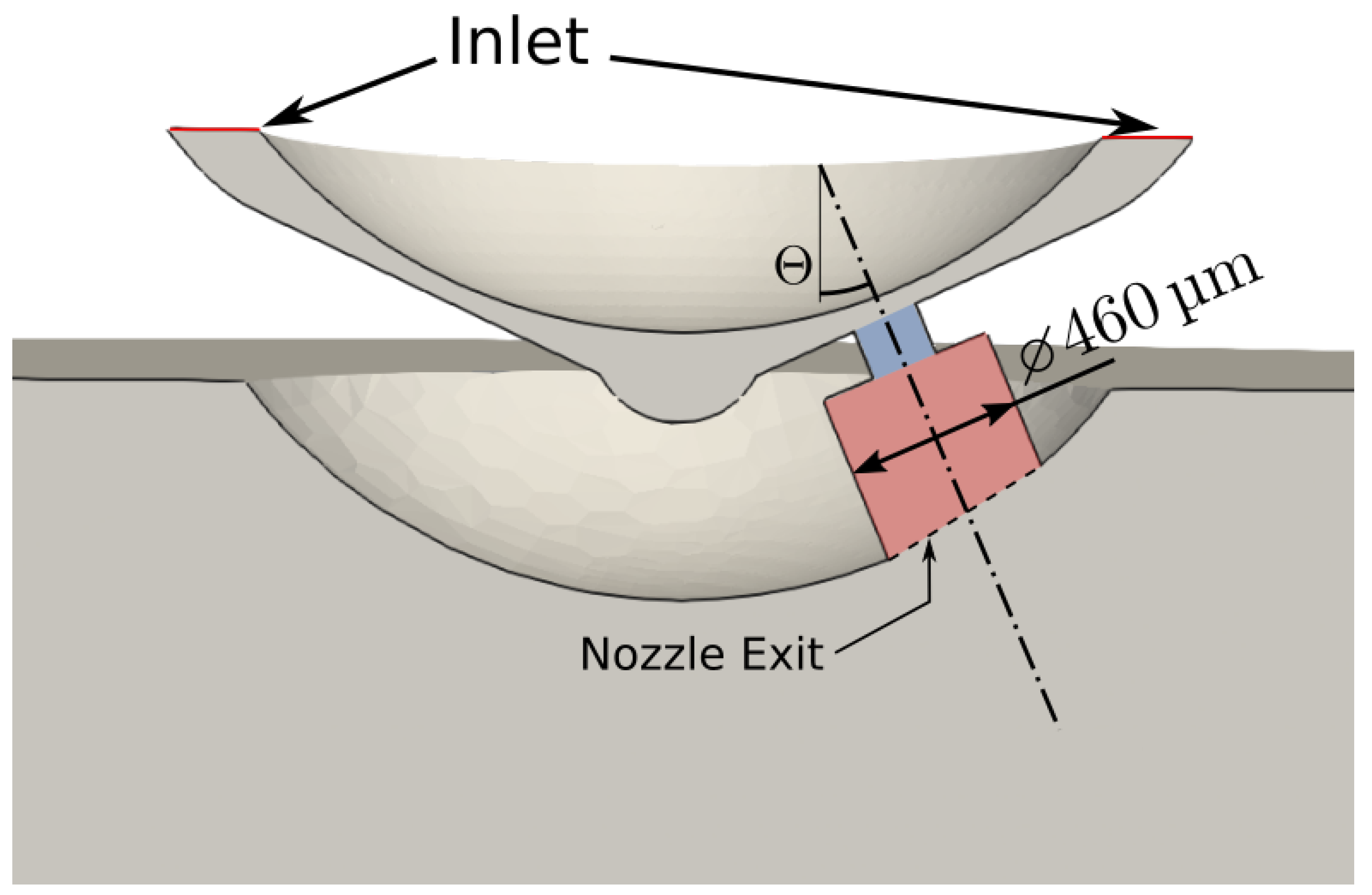
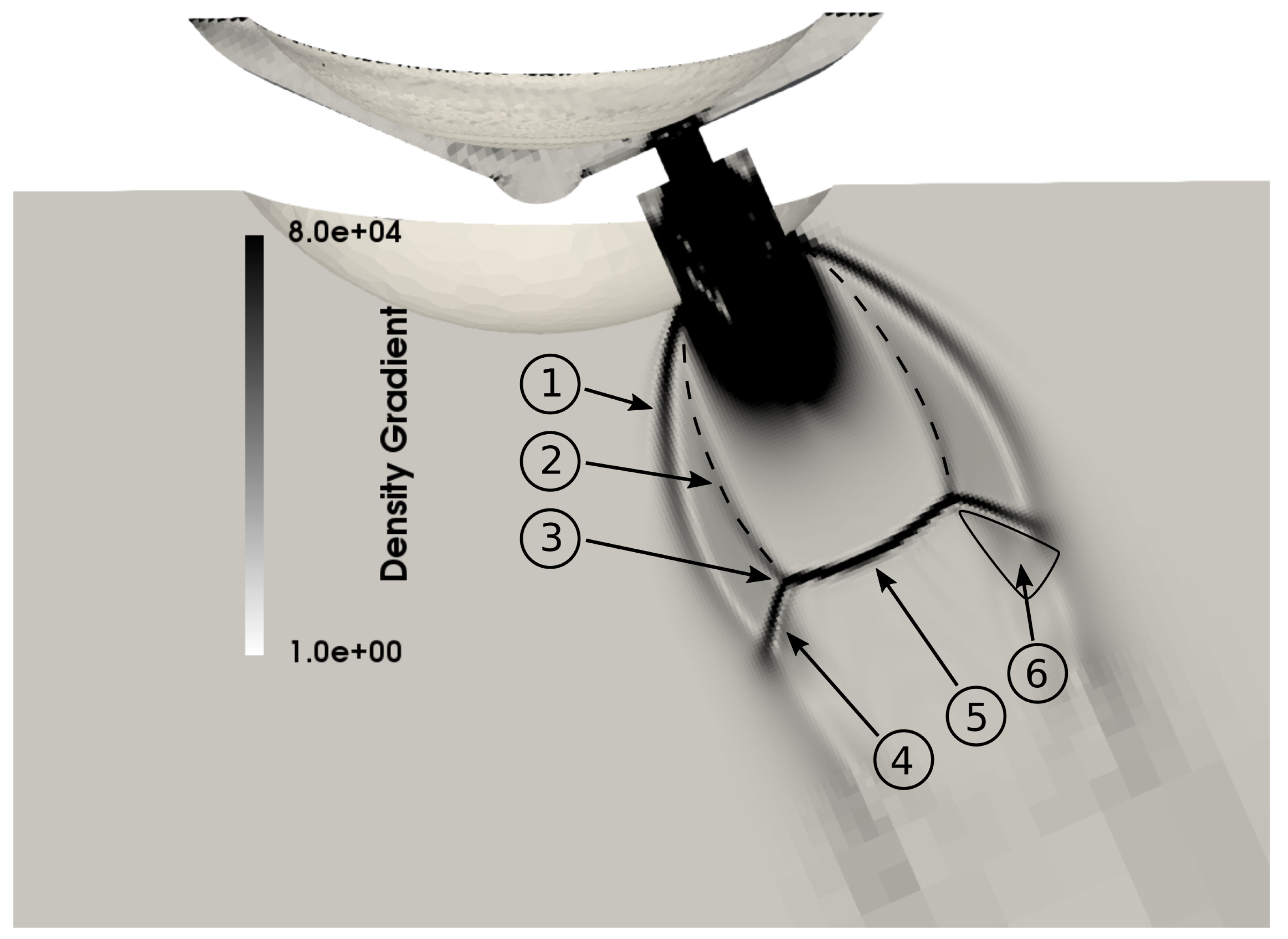


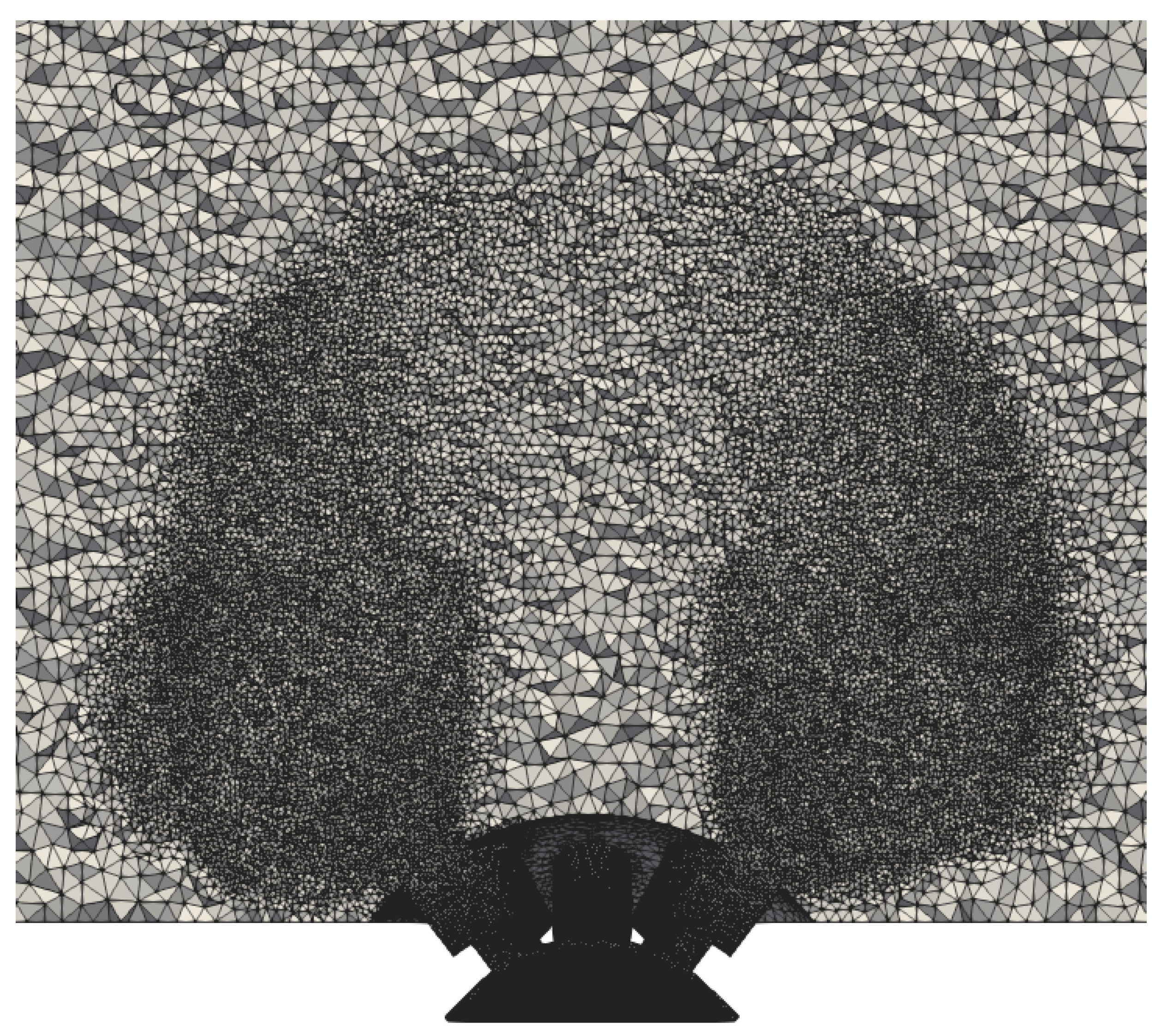
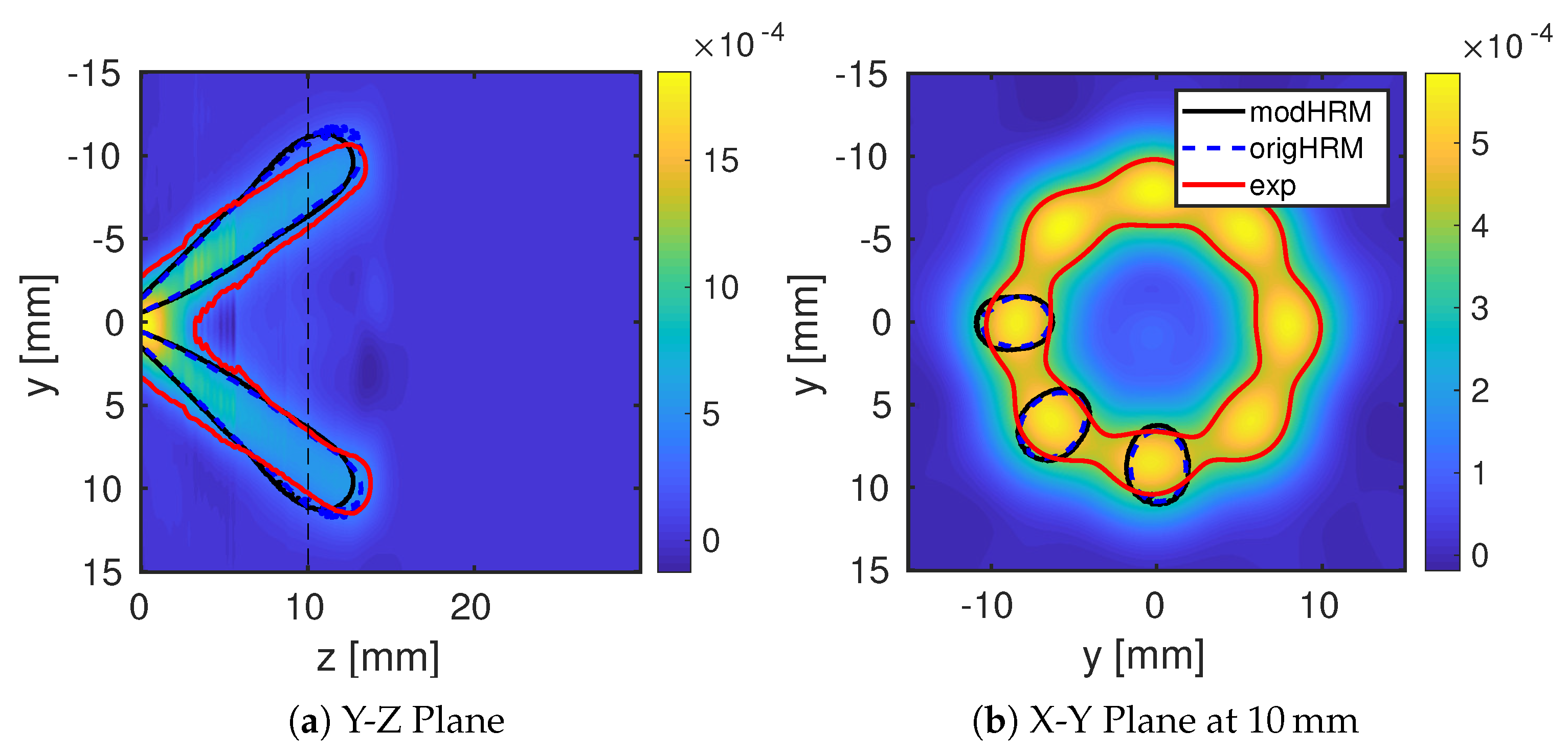
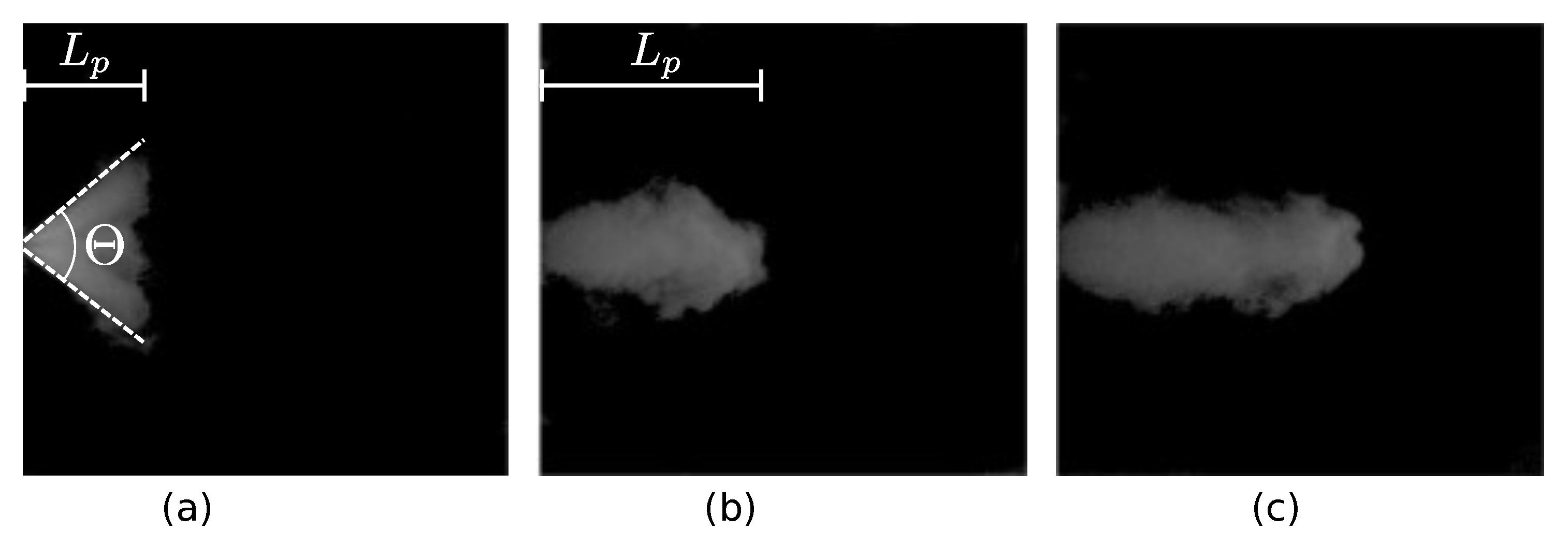
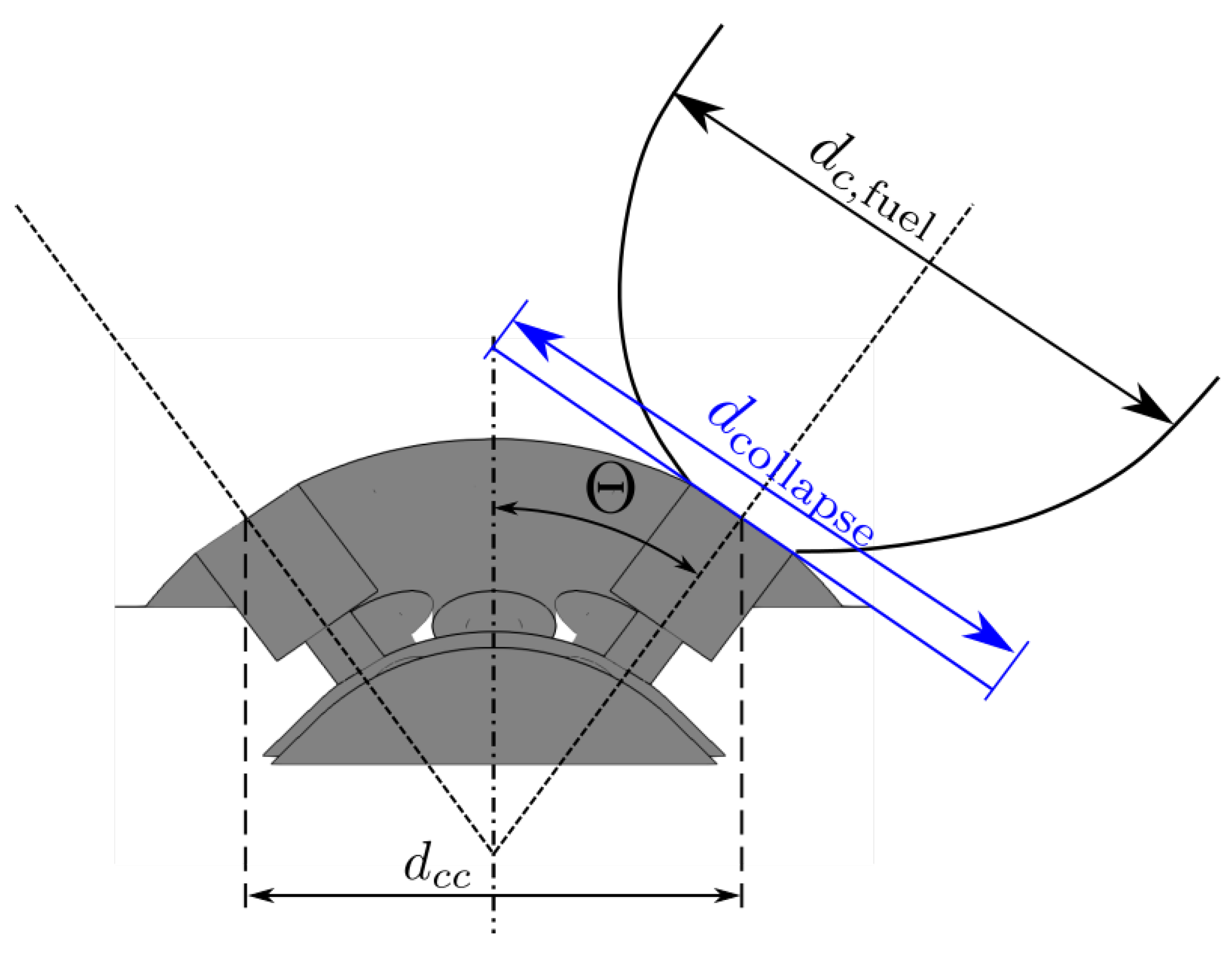
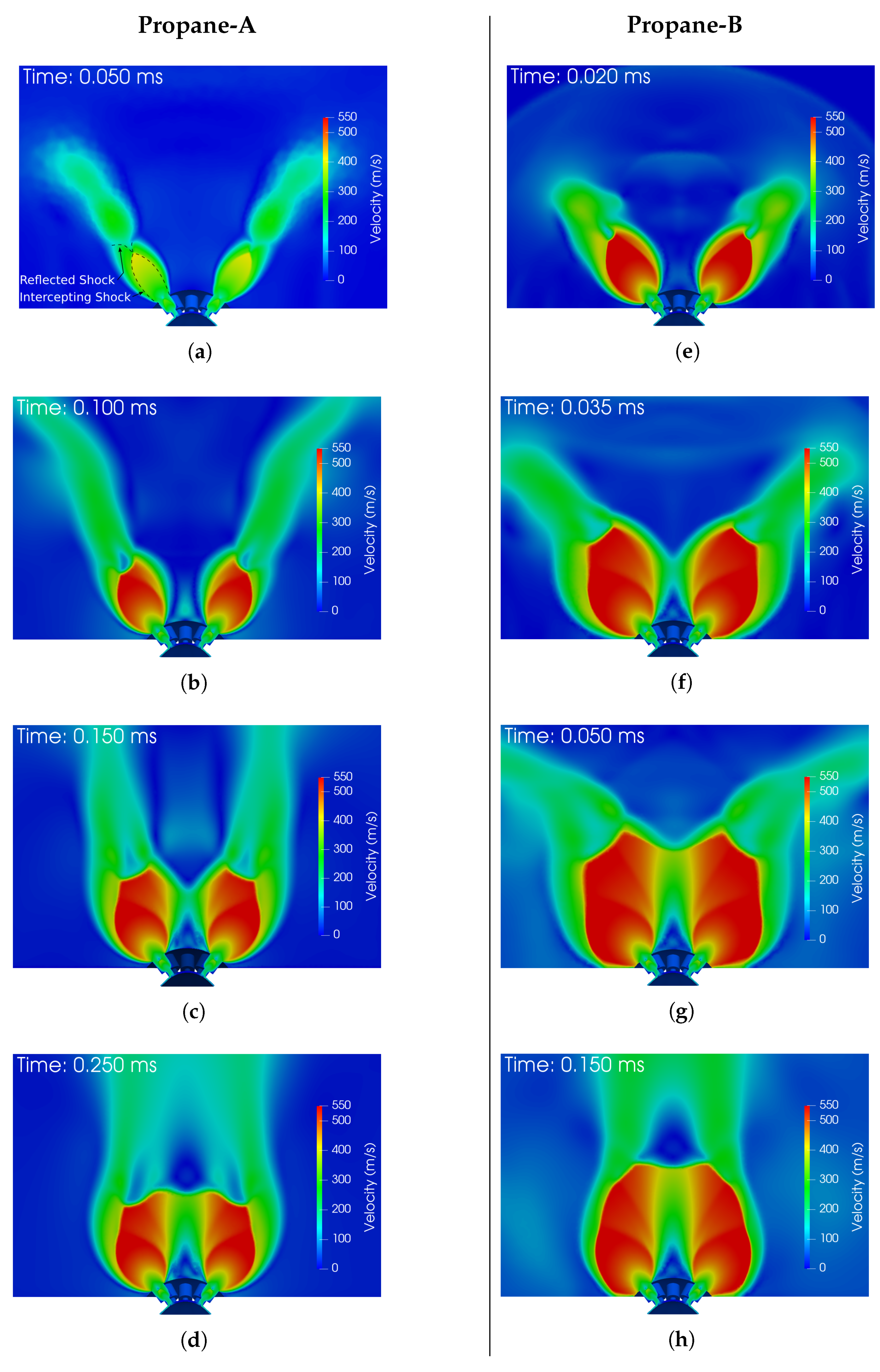




| Case | [MPa] | [K] | [kPa] | [K] | |
|---|---|---|---|---|---|
| nHexane-A | 7.5 | 403 | 101 | 300 | 4.49 |
| nHexane-B | 7.5 | 403 | 60 | 300 | 8.31 |
| nHexane-C | 7.5 | 403 | 20 | 300 | 24.9 |
| Case | Fluid | [MPa] | [K] | [kPa] | [K] | |
|---|---|---|---|---|---|---|
| IsoOctane-A (G2) | Iso-octane | 20 | 363.0 | 50 | 293 | 1.5 |
| Propane-A | Propane | 20 | 363.0 | 100 | 293 | 26.3 |
| Propane-B | Propane | 20 | 363.0 | 53 | 293 | 70.8 |
Publisher’s Note: MDPI stays neutral with regard to jurisdictional claims in published maps and institutional affiliations. |
© 2021 by the authors. Licensee MDPI, Basel, Switzerland. This article is an open access article distributed under the terms and conditions of the Creative Commons Attribution (CC BY) license (http://creativecommons.org/licenses/by/4.0/).
Share and Cite
Gärtner, J.W.; Feng, Y.; Kronenburg, A.; Stein, O.T. Numerical Investigation of Spray Collapse in GDI with OpenFOAM. Fluids 2021, 6, 104. https://doi.org/10.3390/fluids6030104
Gärtner JW, Feng Y, Kronenburg A, Stein OT. Numerical Investigation of Spray Collapse in GDI with OpenFOAM. Fluids. 2021; 6(3):104. https://doi.org/10.3390/fluids6030104
Chicago/Turabian StyleGärtner, Jan Wilhelm, Ye Feng, Andreas Kronenburg, and Oliver T. Stein. 2021. "Numerical Investigation of Spray Collapse in GDI with OpenFOAM" Fluids 6, no. 3: 104. https://doi.org/10.3390/fluids6030104
APA StyleGärtner, J. W., Feng, Y., Kronenburg, A., & Stein, O. T. (2021). Numerical Investigation of Spray Collapse in GDI with OpenFOAM. Fluids, 6(3), 104. https://doi.org/10.3390/fluids6030104







